|
Tan-Lee 诞丽 – Born Beautiful. This was my mother’s name in Chinese. Yesterday morning, she passed onto the next stage and form of energy. As her pulse rate slowed and her body temperature began to cool, we bathed and then dressed her in an elegant, long-sleeved black Chinese qipao with a matching, peony-embroidered sleeveless vest. I did the daughter’s honour of combing her silky, black hair. Her spirit was about to ascend and she’d be meeting her ancestors soon, which meant she’d better look good! And so it was like this that my mother, Liu Tan-Lee, died. She was even more beautiful than when she was born.
When I arrived last Thursday and saw my mom in hospital, she was clearer and more energized than I had seen her in months. Her eyes shined with warmth and affection. But this can often be the case in the final days of someone’s life. An undiagnosed, diffuse neuromuscular deterioration led to difficulty swallowing liquids and foods down the correct tube. This caused mucous to build up in her lungs. Her diaphragm had also weakened so much that she could no longer cough any of the mucous free. Soon, she refused all foods. At first, I tried to gently persuade her into trying to eat. After a day of this, I stopped and told her, ‘Ma, I will respect your decisions, and do as you wish’. She seemed so relieved to hear this. She knew she was close to the end and wanted to do as she wished. On Sunday, when we finally arrived home, she was weak, but surprisingly clear in her advance directives to the hospice nurse. When the nurse asked, ‘If your heart stops, do you want us to try and start it again through resuscitation?’ she replied with a smile and laugh: ‘If it stops, what’s the use of trying to start it again?’ I was so proud of her in that moment. This was the mom I knew — full of clarity, dignity and resolve to meet adversity with courage and lightness. My mom nearly didn’t make it the first night. Her breathing quickened and at one point I thought we’d lost her; her hands and face turned blue. Thankfully, miracles do happen and she pulled through with the help of some timely pain management. More family was on the way. I begged her not to go now, with just me here, and to wait at least another day. Though she could no longer talk, she nodded and understood. For over two years, I’ve been preparing for my mother’s death by accepting its inevitability and doing what I can to love, respect and assure her that who she was and what she’s accomplished in life would not be forgotten. But nothing could have prepared me for the heartbreak and pain of her final passing. Once she started slipping away, I began snuggling with her, just like I did on past visits when I’d lay by her side before sleep and we’d just chit chat together. Holding her hand and cradling her frail frame, I’d tell her that I love her, share funny stories or memories, or describe how I cried and laughed my way through reading the the drafts of my brother’s book about her life. As her breaths became more labored, I implored her to hold on until the others arrived. I’m so relieved that she found the strength to will herself to stay until my brothers and niece arrived the next night. After her pulse stopped and we took our three bows to her, I crawled back up on her tiny hospital bed to snuggle next to her again. I just wanted to hold her close, but what came out was a primal cry from my bones. They rattled and shook with an irrepressible grief that I know is born from love. I didn’t think about it then, but I imagine now in hindsight that is what she would have done had the roles been reversed, and she had been the one to see me through my final moments of death. It’s the least, then, that I could do for her. Mama, I am here for you. Mama you will never be alone. Mama, you will always be loved. My brothers Jay and Kaiser have posted beautiful tributes to my mom and her formidable life on their pages. If you haven’t read them, please do as they not only shed light on the extraordinary life she lived, but are also exquisitely written. My mom’s talent as a writer has certainly been passed down to them. Having my siblings close has been such a gift. I’m grateful that the bonds of love my parents forged in our family are strengthened through the fires of loss. I am so thankful for them, especially for the steadfastness and care that my brother John has provided to her for so many years on his own — he’s been the one on the ground, visiting her sometimes many times a week to ensure she was cared for. As when my father died eight years ago, my mother’s death has brought us all so much closer. We have had honest and healing talks about her life and our relationships to her, which – like any normal, healthy family, was layered and messy. Seven years ago, my mother sent me an email, written in her customary ALL CAPS choice: DEAR MIMI: THIS IS THE MAIL YOU SENT TO ME 1993. LOVE, MOM It was a letter I wrote to her for Mother’s Day during my Junior year at Stanford. What is most surprising to me in reading this again is how I didn’t sugar coat my love for her. I think that’s probably why she sent it to me to read again, and why I imagine she probably appreciated this letter in particular. Reading this, I feel exactly the same now as I did then, which makes me smile. May 5, 1993 Dear Mom, I’ve wanted to write this letter for a long time but have never had the right opportunity to put my thoughts into words until now. Ever since I left for college, there have been countless occasions when I’ve wanted to tell you how much I love you and appreciate everything you’ve done for me. On this Mother’s Day, I thought I’d send you this letter to express these feelings. All these memories keep filling my mind as I write… I remember you braiding my hair when I was a young girl, showing me Mao’s picture in the Little Red Book, and sipping coffee at the Shangri-la Beijing while listening to that wonderful pianist, and talking about all my crazy experiences with Jia and A Dong. I also remember all the pain and suffering we’ve endured as a family, and I would be lying to say that it’s not a very real part of our past. But everything we’ve pulled through has brought us closer together in ways that there’s will never know. Mom, you’ve given me so many opportunities to see the world and appreciate everything in it that’s beautiful and terrifying. You’ve let me feel what love, anger, tragedy, and hope really are, and that’s more than anyone could ever teach me in my lifetime. Indeed, you’ve shown me what’s of value in this world, and have sacrificed so much to give me things that I’ve often taken for granted. It isn’t until recently that I’ve begun to understand all that you’ve done for me and continue to do, as my mother and as my friend. And that’s what you are, Mom — my mom, and my friend. I don’t think I could ask for anything more’. All of my accomplishments and all of my dreams are inherited from you — I owe you thanks for raising me to be who I am and for giving me your strength. I love you. Happy Mother’s Day. Love, 咪咪 (mimi) In the final moments of my mother’s life, she was peaceful, surrounded by the love of family. I can’t imagine a more suitable closure to an extraordinary life. Thank you, Ma — you are my mother, my friend, my teacher. I am so proud to be your daughter. I hope you feel this, wherever your spirit flies in this vast, love-filled sky.
1 Comment
Many people love summer and favour it over other seasons. Especially in the Western world, summers mean beaches, barbecues and letting good times roll. In Chinese medicine and qigong, summer has a similar association with enthusiasm, laughter and love. It is associated with the element of fire, which is like the sun: bright, warm and expansive. It relates to excitement, stimulation and love – qualities that most people find attractive and life-affirming. But in the Chinese Five Element cycles, no element is greater or less than another. While summer and its associated element of fire generally reflects what we consider to be positive qualities, it can – like any of the elements in the cycle – become imbalanced and destructive. How can we harmonise with these summer months and make the most out of them? By understanding the characteristics of summer's element of Fire, and balancing its destructive qualities so that they don't burn us out but rather warm, nourish and awaken our capacity for love. 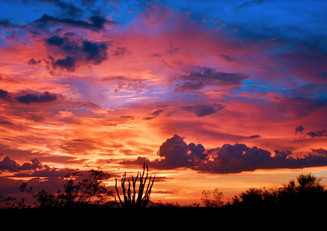 My childhood was spent in Tucson, Arizona – home of the Sonoran Desert. Summers in Tucson were ridiculously hot. Between June and September, temperatures regularly soared to a blazing 110 degrees Fahrenheit (43 degrees Celsius). Despite walking outside and feeling like I could bake into a piece of dried fruit, like all children, I loved summers. Summer meant time off from school, holidays and fun. In Tucson, summers also brought the monsoon rains. These heavy, seasonal thunderstorms would quench the southwestern desert’s insatiable thirst, replenishing groundwater and spurring growth. They also gave rise to the most dramatic and glorious sunsets imaginable. A typical monsoon storm would start with crackling late afternoon thunder followed by fierce bolts of lightening that split the evening skies. This was followed by short rainfall that would pound down the dry, cracked earth. After these storms the desert was left smelling spicy, tangy and sweet. The skies would also be painted rich hues of pink, purple and orange; it was as if the monsoon carried the desert’s heat and fire from the earth and lifted it into the evening skies to finish burning. ‘The castle grounds were gleaming in the sunlight as though freshly painted; the cloudless sky smiled at itself in the smoothly sparkling lake, the satin-green lawns rippled occasionally in a gentle breeze: June had arrived’. ― J.K. Rowling Now that I live UK, I still love summer, but mainly because it offers a balance to England’s notoriously long, dark, winter months. Summers in Britain are true to Rowling’s depictions of satin-green lawns and gentle breezes. Pleasing temperatures typically waltz from mild to warm. Daylight hours stretch gently into the late evening, with sunsets as late as 10pm. Occasionally, a heat wave strikes. Yet even when the temperatures rise to sweaty and uncomfortable levels, Brits like to joke that they are still not allowed to complain. Here, at least, heat is always considered a blessing. Summers in Beijing were often a reminder of the importance of balance. When I lived in Beijing in the ’90s, I remember summers as carefree and easy. Very little seemed to happen in Beijing during the summer. People sat around (or squatted) on street corners fanning themselves. During the hottest points of the day, any space of shadow was often occupied by someone napping. Back then, summers also came with a sense of thrill and adventure. China was starting to open up to the West, and many young Chinese artists, musicians and students were eager to mingle with expatriates. Rock concerts were officially banned, bars non-existent, and clubs illegal. There was one ‘disco’ in town called Juliana’s at the Lido hotel. Expatriates were allowed in, but Chinese were not. Summer nights usually meant prowling down night markets or searching out an ‘underground’ concert. Yet if I am true to my memory, the primary focus of any Beijing summer day was a desperate search for air conditioning or a pool. Summers in the capital were hot and sticky. Only a few places at that time offered air conditioning: large, Western hotels, and one floor of a department store in downtown Beijing. This 5th floor was famous as it allowed ballroom dancing to Western pop music such as Michael Jackson and George Michael. The only pool open to the public then was at the Friendship Hotel. My friends and I often sweated our way across town on our Flying Pigeon bicycles to find respite from the suffocating and debilitating heat. Beijing in the 1990’s was also a time when bicycles ruled the streets. Though free-market drives and economic reform had begun in the late ‘80s, few people had experienced its benefits or effects. As such, there were very few cars on the street. I remember when I first started riding my bike, I rode quickly and often sped past everyone else. Then I would overheat and feel terrible. Very quickly, I understood that the Chinese attitude toward riding in the heat was to slow down. People peddled at a leisurely pace, riding calmly and steadily to wherever they needed to go. Much has changed in Beijing since the early 1990s, including the pace of life and response to summer heat. Most buildings today have air conditioning. Nearly everyone is in a rush to get places. Instead of riding their bicycles, which would probably get them to where they need to go faster, most chose to face the heavily polluted, snarled and slow-moving traffic congesting the roads. Today the constant demand for productivity and activity throughout the height of summer is leading to increased stress, anxiety and exhaustion. As a result, many Beijingers – and Chinese in general – are becoming agitated and exhausted. 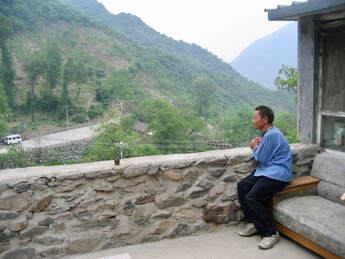 In the village of Sancha, where I rented a weekend home, rural Chinese life had yet to change. Farmers would often be up early to work the fields and finish before 9 am. They would then rest by a stream or somewhere in the shade until late afternoon, when they would resume work. It was a rhythm and way of life lost to most living in cities that I appreciated and continue to see value in acknowledging. Whenever I had a chance to escape the city and head to the mountains of Sancha, I quickly felt my summer and fire energies come back into balance. So how, then, can we learn to relax and enjoy good times – whether that be in the season of summer itself or within the peak of a day – without the negative consequences of feeling restless or anxious? According to qigong and Chinese medicine, we can look to fire’s qualities when in balance. Fire in balance nourishes, uplifts and enlivens us rather than burns us out. Fire in the Chinese Five Element Theory  If Spring’s wood growth sends forth blossoms, then Summer’s fire matures this growth. It relates to ripening, fulfilment and the pinnacle of yang energy. In our life cycle, fire correlates to the years we mature into adults. As our physical height and stature steadies, our growth is directed toward deepening and enriching our relationship with ourselves and with others. In our fire years, we ideally build our communities of friends or family, meet a partner, or discern what it is that we most love to do or makes us most happy. Openness is also an important quality of fire. With balanced fire, we learn to respond skilfully to those who give us love and warmth and open to qualities of love. We live in a world where love is overly associated with romance. This makes discovering the beauty of other types of love, such as love between friends or a deepening love for nature, elusive. It is universally given love that begins to kindle warmth, ease and what Chinese medicine and qigong refer to as the ‘divine spirit’, or shen. Shen animates our life, bringing qualities of laughter and joy to the way we live. It also begins to awaken in the summer months as the heart qi rises. Openness and love are not always available to us though, and this is understandable. If you are reading this, chances are you are old enough to have been hurt deeply. With hurt, we close down to love and to fire’s sources of warmth. This is natural, and thankfully in qigong and Chinese medicine, any tendency to close down, is not viewed as a permanent condition, but rather as a deficiency that can be met by nourishing and supporting our body’s innate need for fire. Since learning about qigong and Chinese medicine, I have noticed that on the numerous occasions when I have been devastated and feel like my heart has shattered into a thousand pieces, remembering this perspective has helped me regain my bearings and start to open once more to all that life offers. Through qigong and other practices such as acupuncture or herbs, we can gradually rekindle our fire and our capacity for love. This is done by providing the right conditions and patiently nourishing our constitutional fire back to a healthy, strong flame. It is important to remember, however, that fire – like all the elements – is a powerful force. It can keep us warm but also scorch and burn. It is a tool that our species has learned to use and apply to our evolutionary advantage and development, but we know that it must be contained so as not to burn down all that we build, such as our livelihoods, communities and homes. Fire therefore needs boundaries to help it be directed and put toward good use. Fire is both a positive and destructive force. Dragons, for example, have historically been symbols of the destructive nature of fire in the West. Their fires represent chaos, evil and wrath (fortunately films such as How to Train Your Dragon that show how dragons are actually kind, loyal, misunderstood creatures have dispelled such lopsided notions!). In China and the East, however, dragons are auspicious, spiritual creatures. While prone to drama, dragons symbolise power, strength and fortune. In many Chinese dynasties, dragons were a symbol for the emperor. In qigong and Chinese medicine, we want to build and maintain a steadily burning flame that keeps our body and heart warm. This will enable us to experience an inner radiance that allows us to feel more open and relaxed. For example, with good fire, we may be inclined to spend more time with people we like and naturally wish to be social with them, and we may develop more caring and compassionate relationships with ourselves and with others. So how do we begin this? First by recognizing and realigning with fire’s natural inclination to move toward an extreme, and reign it in gently. Working to meet maximum yang In Chinese, there is an expression, wuji bifan. This means that when things reach their extreme, they naturally move in the opposite direction. The fire element is an expression of maximum yang. This means that within the cycle of creation, we reach a peak and maturity. After the surge of rising energy of wood’s growth, summer is a season where spring blossoms begin to mature. As crops ripen, plants no longer strive to grow upwards like a young teen but rather start to settle into their size and come of age. A fullness has been achieved. Yet just as this fullness is reached, it begins to fall away. This is the movement back in the opposite direction. This movement toward an extreme and back again generates and sustains balance. It is fire to water, summer to winter, Heaven to Earth. It is the man recognising the light of the sun because there is rain and night. These ongoing movements are represented by the presence of yin within yang, and yang within yin. In the yin and yang symbol, yang is light and yin is dark. Within the lightness of yang, however, is always the seed of yin, and likewise within the darkness of yin, the lightness of yang is always present. Understanding this and orientating our lives toward this ongoing movement toward wholeness is the underlying intention behind all forms of qigong practice. If we apply this model to our experience of summer and fire, we can learn to enjoy moments of excitement and stimulation without letting them turn into something excessive. We can begin to pay attention to when our fire burns so much that it causes over-agitation and overstimulation – qualities that can lead to feeling manic, restless, agitated, anxious and burnt-out. We can also do qigong practices to support stillness and calm if we are feeling restless and agitated, or fuel and fan our fire if it has nearly gone out. In other words, we can begin to move in the opposite direction before we cause our body or mind stress, harm or injury be reaching our extremes. We can also then be in the world in a brighter, vibrant and more loving way.
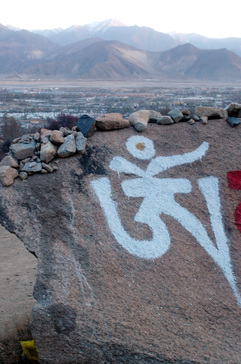 I recently finished my masters degree at SOAS (University of London) in Traditions of Yoga and Meditation (whoo hoo!). It was quite a challenging programme academically, but worth every long essay and lengthy reading list assigned. I enrolled in the course partially because I'd started reading books about modern yoga's not-so ancient origins, and wanted to understand exactly what I was teaching. When I saw that the course not only covered the development of Yoga from ancient to modern times but also included tracing the historical and cultural context within which Buddhism and Daoism were formed, I was sold. The course was fantastic -- maybe one of the best things I've ever done -- but it also made me face some serious existential questions. Mainly, I wondered what was authentic, and whether I ascribed at all to Yoga's various goals and practices. Did I really want to do a headstand if its "original" goal was to accrue siddhis (supernatural powers) and preserve semen, which I don't even have? (bindu is semen in a number of Haṭha and Tantric yoga texts). Like many yoga teachers, I had been told by various people that lineage and tradition were critical, that the "original" intentions for practice were being watered down by modern practitioners, and that teachings should be transmitted by appointed holders of a lineage if they were to truly answers life's most pressing questions. I've never been drawn to orthodoxy, but I wanted to understand where the context for the claims to it were coming from. Within the first year, I was pleasantly surprised to learn that the word tradition stems from the Latin root word "trader", which means "to deliver, betray". Any time a tradition is handed down, the original practice is betrayed by the next in line who changes and adapts it to his or her personal understanding, environment and audience. This opened up the meaning of Yoga tremendously. While ancient Yogic texts offered enticing, poetic and inspiring ideas for practice, as a whole they no longer loomed as monolithic certainties. The many definitions of Yoga instead became recast as lovely bits of contradiction, paradoxes, and processes affected by various agents of change. As one of my professors on the course offered, yoga is and always has been a living, breathing, developing cultural practice that is still being formed. And so here I am. It's where I've probably always been but just needed three years of a masters programme to affirm. I am happy to share that I still stand on my head, but haven't managed to generate any siddhis or semen (thank goodness!). I probably meditate a lot more, which I see as a pretty good outcome from my course. I also trust, as I always have, that Yoga, meditation and qigong work at some uncanny level to help relax our tensions and thus let us feel more open, responsive and free. In that freedom is the potential to love ourselves and others more fully. So... if there are any difference in my outlook post-masters, it's:
Here are a few upcoming programmes, some I'm teaching and others that I wanted to recommend and suggest. Many the courses I'm offering are a Yogic, Daoist and Buddhist practices. I'll do my best to integrate and share how these practices have informed, benefited and inspired me. And, as always, I'll do my best to unfold what I share with a smile, a grain of salt, and a lot of love.
With love, Mimi Inner Relaxation, Fearlessness and Love "The purpose of yoga is to facilitate a profound inner relaxation that accompanies fearlessness. The release from fear is what finally precipitates a full flowering of love." – Erich Schiffmann, Moving Into Stillness (from my Summer 2016 newsletter)
In a recent meditation training, I had the privilege of taking part in one of the most constructive and compassionate discussions about race that I have ever experienced. The topic specifically focused on the issue of race and inclusivity. It was not an easy topic for myself or anyone in the room to broach; in fact, during the discussion my heart was pounding so much I was sure everyone in the room could hear it. Yet by the end of the morning, through skilful guidance by our teachers, I felt a rare softening and relaxing around the thorny and intractable subjects of race, identity and racism. If I could describe the feeling, it would be similar to doing something like the "Yoga of race-relations." People willingly explored uncomfortable edges and stayed open to being vulnerable, clumsy, embarrassed, awkward and hurt. They listened to one another's experiences without making assumptions or asserting their opinions. They did what yogi Richard Freeman describes as Yoga, which, he writes, "...begins with listening. When we listen, we giving space to what is. We are allowing other people to be what they are, and sanctioning our own bodies and our own minds to fully manifest." As people listened to each other on the issue of race and racism, I glimpsed the purpose of Yoga: to elicit a profound inner relaxation that accompanies fearlessness and that precipitates the flowering of love. The timing of the discussion on race and inclusivity couldn't have been more appropriate. Much of the turbulence, shock and violence happening this summer reflects degrees of racism and racial identity. Like most people I know, these have made me tense, sad, angry and fearful. And yet, alongside each tragedy stood powerfully life-affirming experiences: people reaching out to each other and extending greater kindness to others. It's hard to remember when things are messy that care and sensitivity are happening in equal measure. When we do remember this, though, it helps us slow down, soften and listen. The German philosopher Paul Tillich wrote "The first responsibility of love is to listen." These days, people's viewpoints on divisive issues such as Brexit, racism or Clinton vs. Sandars vs. Trump seem to be generating greater tension and anger. Reasoning and debate seem fruitless in affecting viewpoints. Few people seem to be listening anymore. The question now is how to change this and create common ground again before more divisiveness, fear and hatred take hold. I am inspired by what is possible to change through practices such as Yoga, qigong and meditation. I have witnessed myself change and countless people's consciousnesses transform through these practices. However challenging the anger and discord, I'm determined to hold Erich's vision close to me. In small or radical ways, we can nourish our capacity to listen, to be inclusive, compassionate, and less fearful and more loving. I hope you'll join me for some events this summer and autumn where I'll do my best to share practices that helps us listen, release from fear, and bring greater love into this world. I've included some other teacher's programmes that I'll hope you'll also consider.
With love, Mimi p.s. For anyone interested, you can read an article called "White Fragility" that was assigned reading for my meditation training. The link provided above is the abridged PDF version; the full academic version can be read here... Beware, it's not an easy read but it's one of the most powerfully written pieces on understanding racism I've ever encountered. The teacher training is also highly recommended, one of the best programmes I've done to date. From the Surefooted Sheep to the Fast-paced, Risky Business Fire Monkey
It's nearly the Chinese New Year, or Spring Festival. In just one week (the new year officially starts Feb 8), the surefooted and steadier year of the sheep will give way to the clever, curious, confident, charismatic and creative ways of the monkey. In Chinese astrology, monkeys are considered excellent problem solvers, fun to be around, considerate and skillful. Their intelligence, inventiveness and quick-witted qualities make them good leaders and successful people who like to win. Being smart and clever, however, can make the monkey a bit quick-tempered, conceited and impatient. Indeed, the tricky monkey can often set his conscience aside if it means he'll succeed. Carefree and unfettered, the monkey often acts without inhibitions or guilt. So... don't be too trusting of the cheeky monkey! As a fire monkey year, 2016 is predicted to be fast and furious. With an extra kick of monkey cleverness and guile, it's a good idea to try new things, be creative and even a bit rebellious. It's the perfect year for risky business! But as the monkey loves to swing around from branch to branch (his "monkey mind" is famous in meditation as what our minds tend to do when left alone!), make sure to include practices that steady your attention and foster a clear, open attitude. If you can stay flexible and curious, the predictions say that you're sure to succeed. There are some great visiting teachers coming to London the first half of this year. I've highlighted some here, as well as a few courses and workshops I have coming up.
Mimi 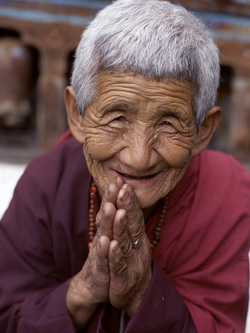 Sometimes I think that if I'm lucky, I'll grow old and have the good fortune of Bidha – the 75 year-old nun pictured here whom I had the pleasure and honour of photographing in 2005 in Bhutan. Of all the 43 nuns at the Animdratshang nunnery, I remember her as the most playful and content; she was at peace in her infinite joy, which was brought into being by her years of dedicated meditation practice. I feel so fortunate to have found a meditation practice early in my explorations of yoga. In fact, I fully credit my first yoga teacher, Erich Schiffmann, for instilling in me the importance of meditating daily. Erich helped me understand that meditation is the source and origin for the highest forms of creativity and clarity. If there is a single piece of advice I could give to any student or teacher of yoga or qigong, it is to meditate every day, even for just a few minutes. For me, meditation is such a simple yet powerful way of cultivating tools to help figure out what to do with our thoughts; it's a way of working with rather than pushing away or demanding more from all the experiences we meet as complicated human beings. I know that for myself, life's unexpected and sometimes grim corners are tricky to turn. Meditation has helped me learn to meet what happens and not completely freak out, run away, or react harmfully to situations as they unfold. Meditation also excites and inspires me; it's funny to think that sitting quietly can be so thrilling. But in fact, it's what makes me feel really fully alive and awake to all that is possible. I absolutely love and am so grateful to have the space and opportunity to share a little bit about meditation each week, even for just 30 minutes. It's a practice that humbles and inspires me, and I hope you'll find it as beneficial, inspiring and full of insights as I have. Tuesdays 5:50 - 6:20 pm at Triyoga Camden (new! starts Jan 19) Thursdays 2:10 - 2:40 pm at Triyoga Camden Saturdays 11:20 - 11:50 am at Triyoga Kings Road, Chelsea 6 Week Mindfulness Meditation Course: starts April 16, 2016. Read more here. (this was from my last newsletter http://eepurl.com/bbsRjj)
At last, the wild, capricious and unpredictable Year of the Horse is ready to reign in and step into the stable. For some, this past horse year was fantastic – fast-paced, full of freedom and charged with adventure. For most, though, the horse year meant lots going on and a rough ride in the saddle (or many falls out of it!). Fortunately, the chaos of the horse year is ending soon. This coming year we can dismount and take a rest with the quieter and more gentle sheep. Caring, sensitive, romantic and creative, the sheep (also the goat, or ram -- it's the same character in Chinese, yang 羊) brings time to heal through its kind and harmonious nature. Though the official first date of the Chinese New Year isn't until February 19, the year of the sheep starts soon -- February 4 (the sooner the better!). Though shy and a bit insecure, the sheep is also known for its determination; it only walks straight, and never careens side to side or moves backwards. Its determination, however, can also be a setback: shortsightedness can make a sheep feel discouraged and down. Remember to keep your chin up this year and let any tendencies toward pessimism be softened with good company, an easy breath and an open mind. A moving photograph conjures something that Robert Sturman describes as a "place in between a tear and a smile." According to Sturman, who takes pictures of yoga celebrities as well as cancer patients and LA policemen doing yoga postures, “when an image touches the heart with a quality of sadness, longing, joy, as well as the pursuit to become stronger as people" that's when his "attention is caught." Reading about Sturman's work elicited the idea that yoga and art evoke similar human emotions that are hard to categorize. I sometimes feel that when releasing out of a strong, deep pose a nuanced and intricate sensation arises that is not that dissimilar to the feeling I have when I set eyes on a radiantly painted Turner sky, or read a line of poetry whose words rattle off the page and shake down into my belly. These impressions aren’t so clear – sometimes they’re so joyful that I want to cry, or so surprising that I want to laugh. To me, yoga and art both yield an ability to summon what artist Paul Chan describes as "articulate speechlessness" —a quality he aspires to instill through his work. Like art, each person experiences yoga differently. For me, words sometimes fall short of describing just what it is that it offers me, so thought I’d make an effort to illustrate through movement and music the feeling that yoga gives me, from the inside out. I originally filmed the sequences in silence, but when I was looking for the right music, I added my friend Jess Meider’s songs, and immediately I felt they echoed a similar tenor and spirit I felt in my body. I’ve always felt that Jess’s songs beautifully hover between a tear and a smile, and invariably remind me of the pursuit to become a stronger person. She's a beautiful yogini with a heart of gold. I’ve also discovered that she has an uncanny way of singing and playing what I feel in my blood and bones. The sequences aren't necessarily things I'd teach, but the videos illustrate how I sometimes combine qigong (a Chinese energy cultivation practice) with yoga asana. I've done a few videos, and will try and release a new one every few weeks. I hope you enjoy this first short piece that incorporates a warrior flow.
p.s. Dad, the first one's for you. Jess Meider: www.jessmeider.com (thanks Jess!) 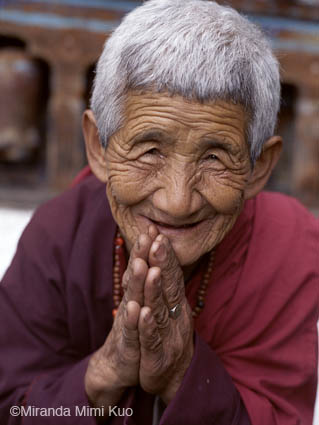 The nun Bidha, in Paro, Bhutan. Playful and content, she suffered enormously in her life, but her smile never revealed this. I photographed her in 2005. The nun Bidha, in Paro, Bhutan. Playful and content, she suffered enormously in her life, but her smile never revealed this. I photographed her in 2005. "In spite of a life devoted to meditation, prayer and books, Brahmagupta was like many other monks I have come to know and admire who are perpetually cheerful, who laugh easily and loudly, the laughter not springing from a sense of humour but from an evolved spirit of mischief and playfulness. Sometimes, watching the frequent and obvious merriment of these monks, I have wondered whether the Buddha's message is indeed about the world being full of pain and sorrow; or perhaps, the Enlightened One has left a secret message for his monks, a cosmic joke which never palls with any number of re-tellings, which makes them laugh so much." -- Sudhir Kakar, The Ascetic of Desire I recently had the pleasure of spending a morning with a three-month old baby. He had just crossed the cusp from expressionless gaze to offering an amused, pleasurable smile at just about anything: holding the baby, I'd look at him and he'd crack up. Turn my head just a little bit? Chuckles and giggles. Widen my eyes, near squeals of joy. It reminded me that at three-months, a human being hasn't had many of the scars of this life set in. Other than crying when tired or grumpy when hungry, few samskaras, or conditioned ways or being, have set in. If there aren't other ailments affecting an infant, the default state seems to be pure and simple joy. This is the state that many Buddhists often describe, and is exemplified by someone such as the Dalai Lama; he is often giggling, laughing, and a self-confessed professional laughter: "I have been confronted with many difficulties throughout the course of my life, and my country is going through a critical period. But I laugh often, and my laughter is contagious. When people ask me how I find the strength to laugh now, I reply that I am a professional laugher. [...]" (excerpt from My Spiritual Journey). In the yoga world, somehow the concept of laughter is less common; few if any of the ancient yogic texts mention the importance of smiling, laughter, or keeping a sense of humour. In part, this is because the ancient texts were collected songs and hymns that offered guidelines to ritual practices or served to recount epic battles and dramatic journeys toward liberation. While beautiful and poetic, they contrast to the the frivolous, often irreverent anecdotes by Zhuangzi, author of one of the early and central texts on Daoism, or the stories from Tibetan Buddhism that celebrate the direly serious and solemn monk who finally opens and awakens by seeing something at which he can't help but laugh. This is not to say, however, that merriment and joy do not have their place on the yoga mat. Though the practice of yoga involves a degree of seriousness, discipline and certainly restraint (the teachings of the yamas offer us excellent examples of restraint), we may actually move closer toward true freedom and away from the conscious or unconscious limitations we face when we meet ourselves with a lightheartedness, and don't take ourselves too seriously. I was reminded of this last weekend, when teaching a level 2-3 class and moving toward a peak of some difficult transitions in arm balances. A few students who attempted the sequence finished by sticking out their tongues and boggling their eyes a bit -- basically having a good laugh. What I saw in them was their joy (pīti) and bliss (sukha) emerge from the states of focus and challenge. These are states described by the Buddha at each stage of his awakening. Perhaps the goal of yoga or any spiritual practice, then, is to remember that beneath the scars of our daily living there is the potential for merriment and laughter. The Buddha teaches us that the root of our suffering is that we forget we are awake, and that mindfulness -- which means "to remember" in Sanskrit (smrti) -- is our pathway back to a conscious presence, a place where we can remember that innate joy. When we do our yoga practice, it's not that we have to finish it and feel happy and cheerful; in fact, most of the time we may be lucky if we simply feel more physically relaxed and guided back to a quieter head space. However, through releasing tension in our physical bodies and perhaps opening some space in our heads, and we start remembering that there are alternatives to the anxious and tired self we may normally carry around and think defines us. I started back at SOAS this week (am enrolled in a part-time masters degree in Traditions of Yoga and Meditation). The course I'm taking this year is titled "Origins and Development of Yoga in Ancient India." The first lecture reminded me of why I am definitely in the right program for me. In it, the professor, Ted Proferes, suggested that yoga is a contested term, a vessel that can be filled with different contents. In ancient India, yoga is not as monolithic as often presented, and through much historical and archeological evidence we can understand yoga as a collection of divergent ideas. The meaning of yoga in Sanskrit varies as much from union, to fitness, a chariot, employment, a charm, or a constellation of stars. In ancient times the goals of it included spiritual liberation but also bhoga, earthly and heavenly delights. Attainment of these things that we consume and cause us pleasures was in fact an end goal for some. How, Professor Proferes inquired, can spiritual liberation be squared with the concepts of bhoga, a means of attainment? I thought, hmm, good question!
His answer was simply that these divergent strands of thinking suggests that yoga in ancient times was -- and is still today -- a living, breathing, developing cultural practice, and that is still being formed and divulged today. It's still being used in different ways. If we keep this fluidity in mind we can approach some of the apparent contradictions that exist in the yoga we know today, and recognize that we have inherited an ongoing evolution of the practice. Is so good to feel guided away from strong ideological arguments and toward greater contextual understandings of this incredible tradition I love. Stay tuned for some periodic updates and inspirations from the course, I imagine they'll be coming regularly... |
AuthorTeacher, writer, lover of movement and meditation who lives with her husband, dog, three cats, 6 chickens and 10,000 bees. Archives
December 2022
Categories
All
|
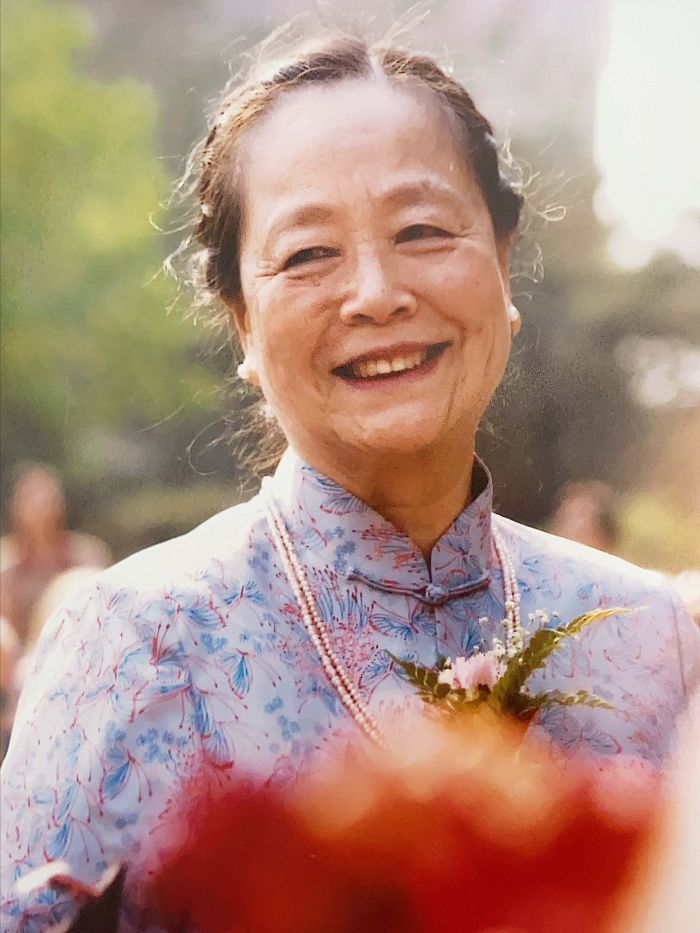
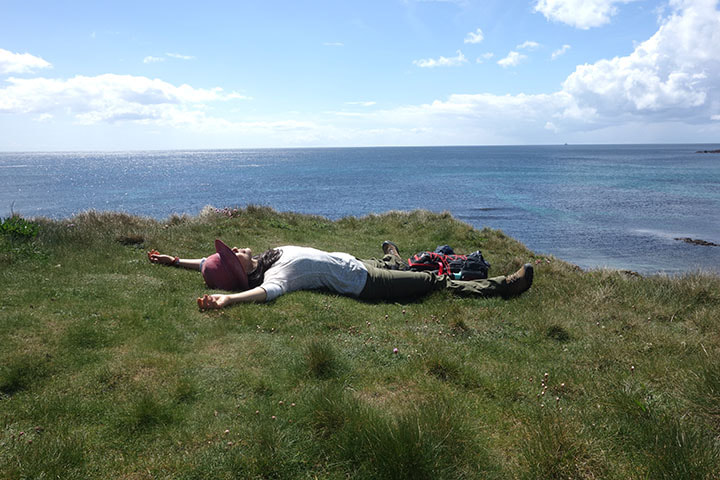
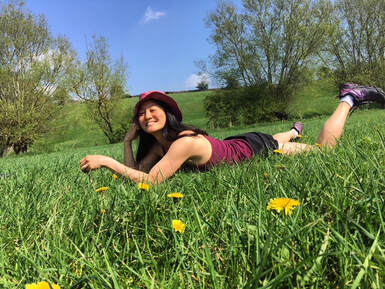

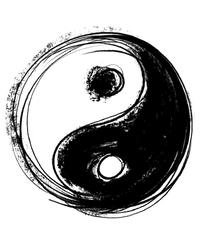
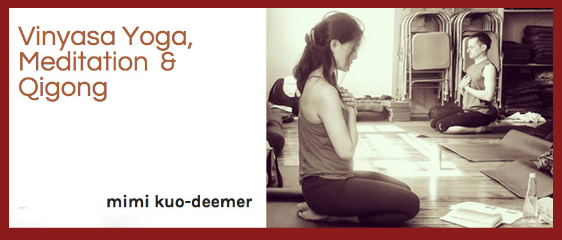
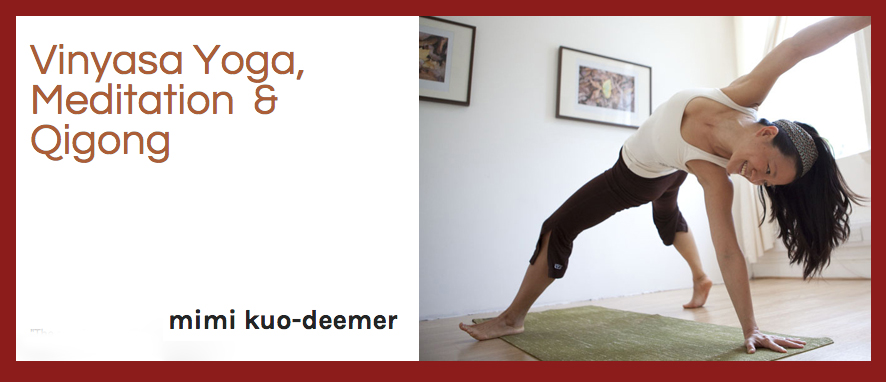
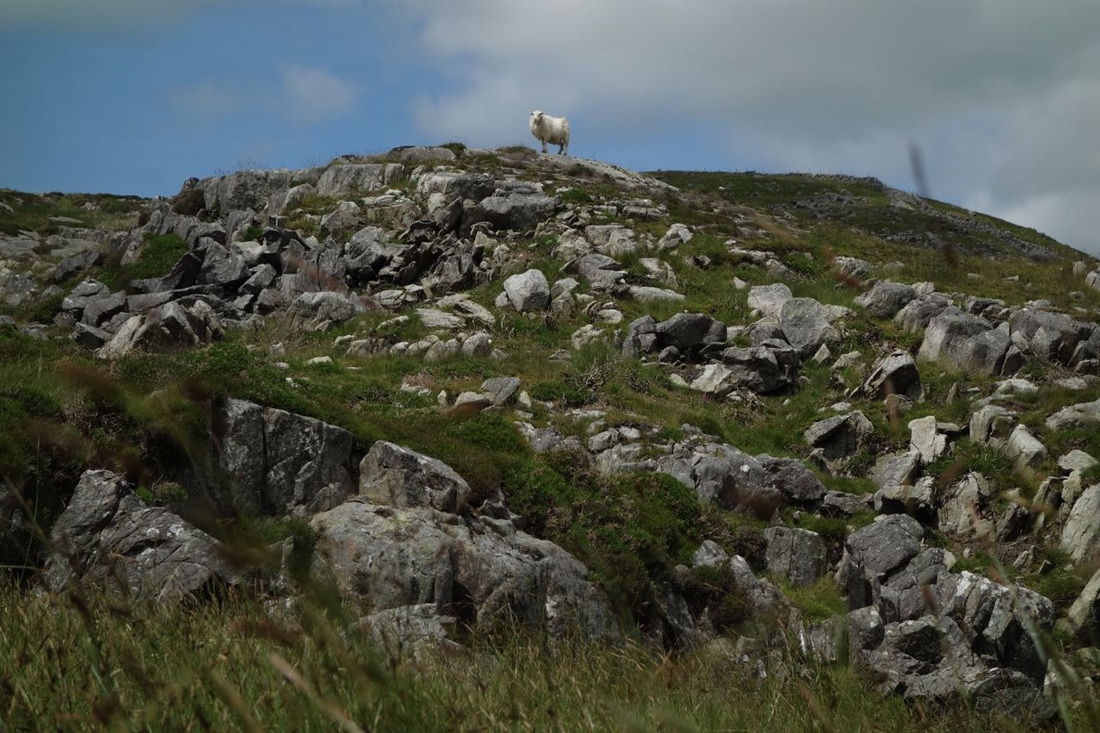
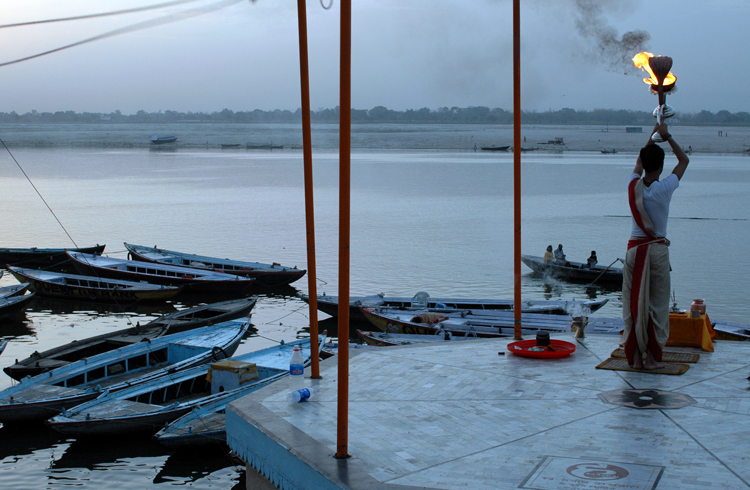
 RSS Feed
RSS Feed